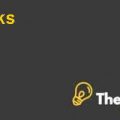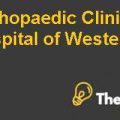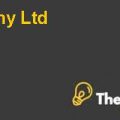
Introduction
Agnico Eagle is a company that produces gold and has an expertise of thirty years in the mining of precious metal. The company is located in Toronto, Ontario and its major operations are built around the mining of gold; however AEM also deals in other minerals like zinc, copper and silver which are the by-products of gold mining. These by-products help the company’s financial performance by lowering the cost of minerals because the income from these minerals is subtracted from the cost of gold.
The Canadian region was rich in minerals so the company’s operations were in a fairly good condition. The operational potential of the AEM’s LaRonde mine was favorable for the company because of the fact that Canadian Mining countries were very attractive in terms of their potential. Quebec and Ontario were considered the most attractive and best mining investment country, where AEM was located. Gold mining companies are generally categorized as either senior gold producers, junior gold producers, or an intermediate gold producer. AEM falls in the second category.
Problem Statement
The share price of AEM declined nearly a dollar on April 30 to $13.89 which makes up 6.7% downside value. This was a reason of concern for the portfolio manager at National Securities Inc. whose portfolio had a large number of AEM securities. While AEM had many strengths like a good geographical location, a high experience in the industry and many others, but the trembling and declining gold prices in the last decade has put many companies into distress as their cost of extraction does not exceed the incoming price, hence they incurred losses and closed down the company.
Thus, the portfolio manager had to come up with a likely valuation for the company to make a decision regarding whether to hold the securities or sell them up to avoid a potential loss. This could be done by the traditional DCF model that has carefully examined financial assumptions but the resource companies like AEM would have to be adjusted by the Black and Scholes model for determining the value of un-mined gold, to avoid the undervaluation of the company.
Analysis
Value of AEM and its equity from operations using the DCF method
A discounted cash flow method is generally used for the valuation of different companies so that the total worth of holding the security can be determined and compared the returns from it and other companies; in order to make a better educational choice between the securities. A security that has growing future prospect and promising returns is usually preferred by the investors like the portfolio manager of National Securities.
The DCF model uses the calculated free cash flows and the weighted average cost of capital of the company. The idea of DCF model is that 5 or 10 year forecasts are done for the free cash flows and are discounted to reveal the present value of the company. However, the company’s resources are not depleted completely by that time so it has some terminal value as well. The present value of that terminal value is also added in the value of the company. Along with that, other factors like present value of tax loss carry forward, present value of tax shields on development expenses and after tax funding of the pension plan is also included to provide a complete picture of the value of the company. It also includes cash and marketable securities along with non-operating assets.
Though, DCF works well for normal companies but it undervalues the resource based companies. So, adjustments for including present value of un-mined gold are needed to incorporate the different nature of this industry.
Using the information in the Agnico-Eagle Mines Ltd. case document, the DCF model is applied to calculate the value of the company and value per share.
Net Present Value from Operations
The net present value of the operations are calculated by forecasting the free cash flow amounts and discounting them by the weighted average cost of capital for the year. The amount of projected free cash flow and the WACC is taken from case exhibits 9 and 10. The number of year taken for this calculation is after a quarter and a month has passed. Thus instead of the first year, the value of n is taken as “8/12” and for the second year “1+8/12” and so on.
The net present value from operations is thus calculated to be (21,638) from the data given in the case.
Calculation of Terminal Value
The formula for terminal value is “NOPLATPA (1+g)/K”. NOPLATA stands for Net operating profit less adjusted taxes plus amortization. Thus to calculate the amount of terminal value, the estimated NOPLATA of last year is taken and is multiplied by growth rate for the calculation of useful life of the project and discounted by WACC. The resultant factor is then discounted again to calculate the present value of that terminal value over the number of years under study................
This is just a sample partial case solution. Please place the order on the website to order your own originally done case solution.







